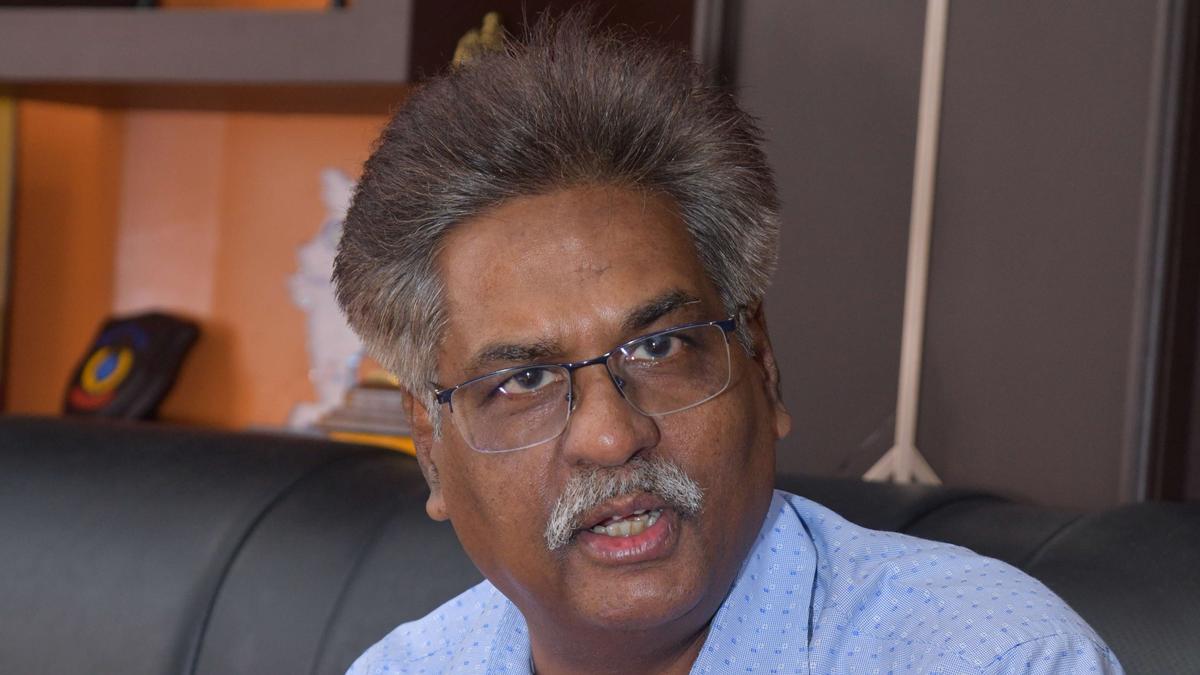A. Rajarajan, Director, Vikram Sarabhai Space Centre, displays a scale model of the crew module for the Gaganyaan programme on August 25, 2025.
| Photo Credit: Special Arrangement
The first Integrated Air Drop Test (IADT-01) conducted successfully at Sriharikota on Sunday (August 24, 2025) marks an important step for Gaganyaan, India’s keenly watched programme for sending humans to space, A. Rajarajan, senior scientist with the Indian Space Research Organisation (ISRO) and Director, Vikram Sarabhai Space Centre (VSSC), said on Monday (August 25, 2025).
The ISRO will follow up IADT-01 with the second Test Vehicle Mission (TV-D2) and the un-crewed Gaganyaan-1 (G1) flight — two of the critical trials lined up before the actual mission carrying astronauts — soon, Mr. Rajarajan told The Hindu.
He described the upcoming TV-D2 as a “complex mission” that will put to test the crew escape system (CES) under critical conditions. The ISRO had successfully accomplished the Gaganyaan TV-D1 mission in October 2023. Such tests are vital as safety is of paramount importance in manned missions, he said.
For the uncrewed Gaganyaan-1 (G1) mission, the spacecraft will be launched aboard a human-rated LVM3 rocket. The mission will also have on board Vyommitra, the humanoid robot developed by the ISRO.

An expert in composite materials, Mr. Rajarajan took charge as the VSSC’s Director on August 1, 2025 after a six-year stint as the Director of the Satish Dhawan Space Centre, Sriharikota (SDSC-SHAR).
‘VSSC plays a major role’
On the success of IADT-01, Mr. Rajarajan said that as VSSC Director, he was happy that the test went as expected. The VSSC had a major role in IADT-01, being responsible for “90%” of the activities alongside the Human Space Flight Centre (HSFC) and SDSC-SHAR and other agencies, including the Indian Air Force, he said.
IADT-01 successfully demonstrated the parachute-based crew module deceleration system for Gaganyaan. The 4.8-tonne dummy module was dropped from a height of 3 km from a Chinook helicopter operated by the IAF.

“VSSC had carried out the end-to-end modelling for this test. The touchdown was achieved as expected. Now, we more or less have a clear picture of parachute deployment and the touchdown conditions,” he said, adding that the data will now be closely studied for use in upcoming trials.
“People may think it’s simple, dropping something from a helicopter. But it was a very complex mission, involving enormous instrumentation, design and development,” Mr. Rajarajan said of IADT-01.
Published – August 25, 2025 11:21 pm IST
